Joseph Stalin grew into the leadership role of the Communist Party of the Soviet Union on April 3, 1922. By 1927, he had ultimate power over the USSR and was its undisputed ruler.
How did Stalin seize power so fast following Lenin’s death and depose all his opponents?
Stalin was one of the world’s bloodiest rulers. He was the undisputed ruler of the Soviet Union and, later, the Communist bloc in Eastern Europe.
He ascended to this unparalleled influence due to his abilities and awareness of the Communist Party’s inner workings.
Following the Russian Civil War, Stalin used these advantages to seize complete control of the Soviet Union (1917-1920).
Joseph Vissarionovich Stalin born as Ioseb Besarionis dze Jughashvili on December 18, 1878, was a Soviet political figure and a Georgian rebel. He ruled the Soviet Union for around 31 years from 1922 to 1953.
He began ruling as a member of a collegial leadership who then solidified control and ended up becoming a dictator around the 1930s.
Stalin, an identitarian communist, adhering to the Leninist understanding of Marxism, standardized these ideas as Marxism–Leninism, while his particular regulations are known as Stalinism.
Stalin, widely regarded as one of the most influential personalities of the twentieth century, was the target of a prevalent cult of personality within the global movement of the Marxist–Leninists, which adored Stalin as a defender of the capitalist poor and socialism.
Stalin has remained popular in Russia and Georgia since the Soviet Union’s breakup in 1991 as a victorious wartime leader who solidified the Soviet Union’s standing as a dominant world power.
On the contrary, his reigning period was considered dictatorial for the widespread repatriation. cleaning of ethnicity, massacres of hundreds of thousands, and majorly the slaughter action of millions due to starvation.
Was Stalin in government during World War 2?
Content
After the death of Vladimir Lenin in 1924, the Soviet Union’s commander during World War 2 (dubbed the Great Patriotic War by the Soviets) was Joseph Stalin. He was a tyrant who was rude and brutal.
What was Joseph Stalin’s role in World War 2?
The German-Soviet Nonaggression Pact was formed in 1939, on the eve of World War 2, by Joseph Stalin and German dictator Adolf Hitler (1889-1945). Stalin then annexed parts of Poland, Romania, and the Baltic states of Estonia, Latvia, and Lithuania. In addition, he began an invasion of Finland.
What exactly was Stalin’s Five-Year Plan?
In the Soviet Union, Joseph Stalin’s first Five-Year Plan (1928–32) focused on building heavy industries and expropriating agriculture at a severe drop in consumer goods. The aims of the first plan were carried forward in the second plan (1933–37).
Early Life
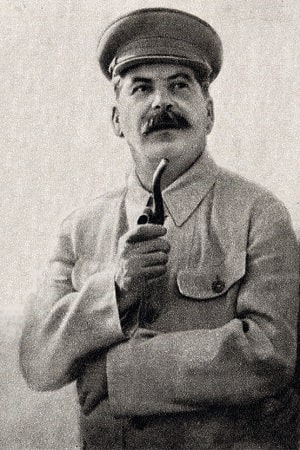
Joseph Stalin, the eventual leader of the Soviet Union, was born on December 18, 1878, in Gori, Georgia, to a Georgian cobbler and his spouse in a small, impoverished town. Josef Besarionis de Jughashvili was his given name.
He was of Georgian descent, but Georgia was part of the Tsarist Russian Empire.
Stalin attended a seminary after graduating from high school. Instead of pursuing theology and the Bible, he espoused Marxism and became the revolutionary Bolshevik Party head – Vladimir Lenin.
Stalin quickly entered the Bolshevik cause and became heavily involved in violent assaults on the Tsarist regime.
He was a legendary bank robber who used his robberies to destabilize the Tsarist administration and fuel the revolt.
After being put under monitoring by Russia’s secret police, the Ohrakan, he went underground for his operations.
He rose to become one of the Bolsheviks’ Caucasus leaders, establishing paramilitaries and participating in a terrorist campaign in the region.
He was a participant in the infamous Tiflis bank robbery, in which 40 people were killed. This crime elevated him in the eyes of the Bolshevik leadership.
Stalin was caught and deported to Siberia several times, but he always managed to escape.
He subsequently became one of Vladimir Lenin’s closest associates, or so he later claimed vehemently, which helped him climb to power following the Russian Revolution.
In 1910, he picked his name to Stalin, which means “Man of Steel” in Russian, ostensibly to conceal his true identity from the authorities and possibly project a public image of a true revolutionary.
The October Revolution and the Civil War
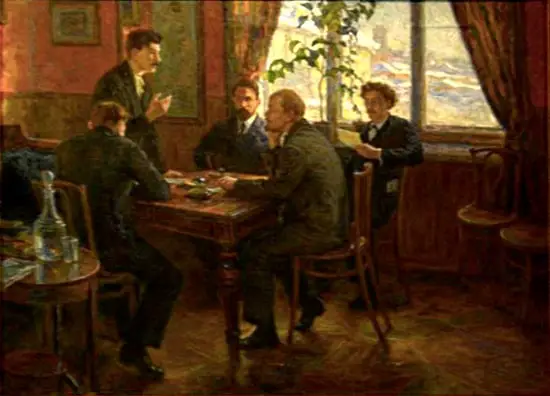
By 1917, Stalin had moved to St. Petersburg, which would be renamed Petrograd. This city was the capital of the revolutionary government that seized power from the Tsar and his administration.
Despite terminating the Romanovs’ power, the Provisional Government led by Alexander Kerensky was unpopular.
The Bolsheviks cleverly implemented a policy of offering peace and land to a war-weary and famished population.
Their message was well-received, and in October 1917, they seized the Winter Place and proclaimed that the Russian Empire had been renamed the Soviet Union.
It is unknown what role Stalin played in the Bolshevik Revolution. Later propaganda depicted Stalin as being on Lenin’s side during the Revolution, as depicted in posters and other imagery.
However, Stalin seems to have contributed a little part to the Revolution. On the other hand, Stalin made his name during the Russian Civil War.
He was designated as a Political Commissar to numerous Generals and was responsible for ensuring their loyalty to the Bolsheviks.
He was eventually assigned command of a military unit and brutally repressed White Counter-Revolutionaries and outlaws.
He was also primarily fundamental in conquering his native Georgia, which had proclaimed independence. Stalin was then appointed to the Ukrainian army, where he assisted in repelling a Polish assault.
However, he was chastised for not routing the Poles and spreading the Revolution throughout Europe.
The Bolshevik Party

Historians have frequently argued that the radically new Leo Trotsky won the Russian Civil War for the Bolsheviks. This depiction of Trotsky’s role is today thought to be exaggerated.
On the other hand, Trotsky played a vital role in the Soviet Union’s Civil War victory over the Whites.
He was a significant figure in Communist Party, rivaling Lenin in prominence. Lenin was concerned about Trotsky’s power, so he hired Stalin to help him develop a support network.
Stalin did this while also building a body of committed supporters within the Party.
Stalin was appointed General Secretary of the Soviet Union in 1921. This position provided him with a lot of clout in the Party.
Stalin established a network of followers within the Communist Party. Lenin grew distrustful of Stalin and began to distrust his old protege.
Lenin, in particular, despised Stalin’s violent methods in his native Georgia, where he brutally crushed opponents of Bolshevism. Stalin’s popularity among rank and file Party members grew despite Lenin’s reservations.
Unlike Trotsky and Lenin, he was not an academically prosed but rather someone with a common touch, and he was well-liked by many.
Lenin and Stalin
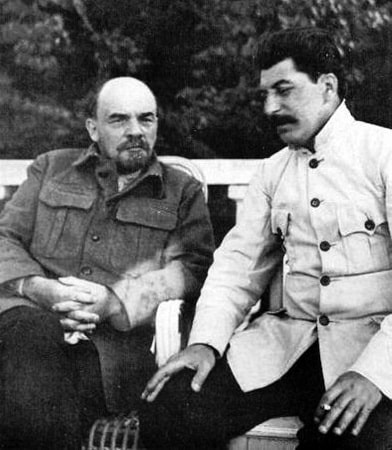
Lenin remained in power in the new country after the Revolution. However, following surgery in 1922, he suffered a stroke, and he was never the same again.
The stroke crippled Lenin, and many worried he wouldn’t live long. Lenin was confined to a country hideaway and isolated from politics.
The Bolshevik Party’s leadership council, the Politburo, directed Lenin to avoid public appearances and instead focus on his rehabilitation.
The Communist Party’s General Secretary, Stalin, was one of the few who still had access. Stalin utilized his power to isolate Lenin by effectively cutting him off from the Party.
He was well aware that Lenin despised him because he was viewed as ruthless and autocratic by Lenin.
Stalin even chastised Lenin’s wife for violating Politburo directives by assisting Lenin in communicating with others on public issues. Lenin was enraged by Stalin’s attack on his wife.
As Lenin’s relationship with Stalin worsened, he dictated his Testament. This Testament was his judgment of the contemporary Bolshevik Party, the Revolution’s destiny, and condemnation of Stalin’s character.
Stalin was chastised and condemned for acquiring personal power. Stalin’s removal as General Secretary was demanded.
A heart attack disabled Lenin before he could publish the Testament. The Testament was delivered to Stalin by one of Lenin’s secretaries, who served as his agent. Stalin suppressed Lenin’s critique.
Stalin’s career would have ended if the Testament had been revealed. Stalin’s allies banded together to suppress any mention of the paper. On January 21, 1924, Lenin died of a suspected stroke.
The Soviet Union
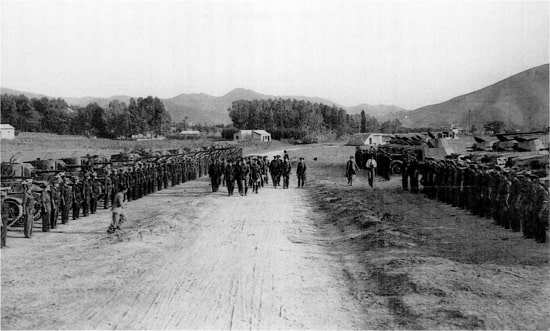
Stalin was granted the task of organizing Lenin’s official burial after his death. He planned the funeral while disregarding Lenin’s dying desires.
Despite the protest of Lenin’s family, Stalin delivered a speech at the funeral. Stalin was now the de facto successor to Lenin under Party norms.
However, he did not have complete authority over the Party. He had to share authority with other Soviet leaders such as Trotsky, Zinoviev, and Kamenev.
Stalin was the Communist Party’s nominal leader, but many in the Party saw him as only a figurehead. Moreover, people also dismissed him as a nonentity and a meaningless political figure.
Many prominent Bolsheviks had always undervalued Stalin due to his lack of education. Trotsky, Kamenev, and Zinoviev considered themselves as Lenin’s natural successors.
However, they were not as favored publicly as they thought, and Stalin was enormously popular with regular Party members. Stalin was astute enough not to appear to be pursuing Party leadership.
Furthermore, when Kamenev and Zinoviev attempted to engage Stalin in a conspiracy against Trotsky in 1925, Stalin publicly repudiated them.
As a result, Stalin and Trotsky were the only candidates for leadership positions.
Stalin as the Leader Head of the Soviet Union
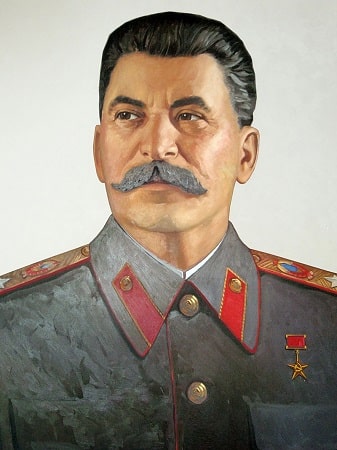
In 1925, Trotsky and Stalin began competing for control of the Soviet Union. Stalin would emerge as the undisputed leader of the Soviet Union by 1927, but first, he had to eliminate Trotsky from the competition.
Trotsky and Stalin had a personal rivalry because they held opposing views on the nature of Communism.
More crucially, they held opposing views on the future of the global Communist insurrection. The Bolsheviks, who Marx influenced, believed in a global Communist Revolution.
Stalin began promoting “Socialism in One Country,” which holds that the Bolsheviks should concentrate on establishing Communism in the territories they already controlled rather than extending the Revolution.
This viewpoint drew many like-minded Party members, particularly the rank and file, to Stalin. Stalin positioned himself ideologically opposed to Trotsky.
Trotsky was progressively isolated as the Party embraced Stalin’s position. He then decided to coordinate public protests against Stalin’s expanding control of the Party, along with others.
On the other hand, Stalin used a Lenin-enacted law mandating Party unity. Stalin claimed that Trotsky was attempting to split the Party, and this gambit succeeded in further marginalizing Trotsky.
Another aspect in Leon Trotsky’s growing isolation, notwithstanding his triumphs during the Russian Civil War, was his Jewish origin. In Russia, there was a lot of antisemitism, which made Trotsky controversial.
By 1927, Stalin had amassed enough influence to remove Trotsky, Kamenev, and Zinoviev from the Politburo and later remove them from the Bolshevik Party.
Dictatorship

Stalin was the undisputed dictator of the Soviet Union by 1927. He had packed the Party’s administration with people devoted to him.
Stalin’s followers were increasingly selected for the Politburo. Many of Lenin’s erstwhile lieutenants recognized Stalin’s ascension to de facto dictatorship.
Bukharin was something of a Party favorite. He was attractive, gregarious, and Lenin’s favorite. In Politburo, he led the resistance to Stalin.
He rejected Stalin’s policy of accelerated industrialization of the Soviet Union and advocated for moderate development.
Stalin won, and Bukharin was later removed. On Stalin’s orders, everybody who had crossed him in any way would be killed.
Years later, Stalin dispatched an assassin to assassinate Trotsky. Later, he was slain with an ice pick by a Soviet agent.
Kamenev, Bukharin, and Zinoviev were later tried and killed in a sham trial on trumped-up accusations of conspiring against the state.
Lenin’s wife died under questionable circumstances, with many believing she was poisoned on Stalin’s orders.
Conclusion
Stalin was the unchallenged supreme dictator of the Soviet Union by 1928. Despite Lenin’s and many of the Party’s senior leaders’ objections, he accomplished this in 1920.
He was commonly regarded as an illiterate peasant.
However, he was able to use this to his advantage, and as General Secretary, he established a power base throughout the country.
Stalin was also well-liked by regular Party members, critical to his success. Stalin effectively created a vast and influential following, allowing him to gain absolute control of the Soviet Union gradually.
